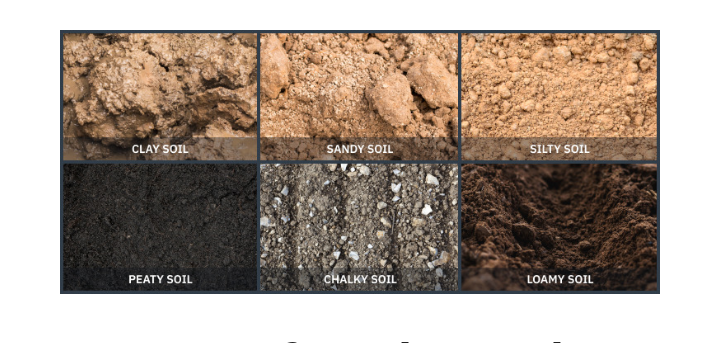
Soils result from a mixed constituent of mineral particles and organic matter. This brings about the texture of the soil which is the feel of the moist soil. Soil texture is the approximate measure of the particle size distribution or mechanical composition of the soil which is measured in the laboratory using Hydrometer methods by stokes ( mechanical analysis) . Texture determination by feel is related to the type of soil on the field. It can be determined on the field by rubbing the moist soil between the fingers and thumb. While it is determined in the laboratory by particle size analysis. The only advantage the technique of particle determination by feel on the field has over particle size analysis in the laboratory is that determination by analysis is a tedious process.
The three separate size class of soil, that is, sand, silt and clay can easily be identified by visual processes using the eye and feel using the fingers. Coarse sand particles are loose with large grains and gritty feel. Fine sand are less obvious with slight to moderate grittiness. Silt cannot be seen with the naked eye but through a lens or electron microscope. They have smooth silky feel when wet and dry. And they are slightly plastic when wet and dry and are slightly plastic. Lastly, clay soil are sticky and plastic when wet but compact and hard when dry.
Some soils may have the same texture but with different particle size distribution and vise versa.
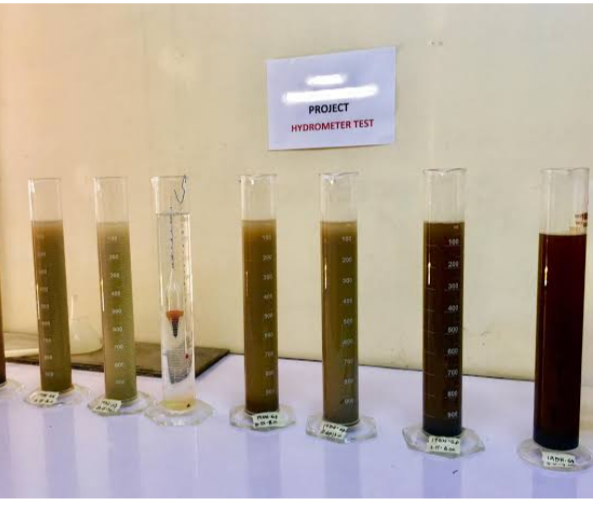
This may be due to the following;
a. Amount of organic matter
b. Types of clay
c. Shape of the particles and
d. Degree of aggregation
a. AMOUNT OF ORGANIC MATTER : Organic matter are in high amount at the upper horizon of the soil. When the amount in the soil is high, the soil becomes smooth and appear to have a high silt content
b. TYPES OF CLAY: 2:1 Clays like montmorillonite absorb more water than 1:1 kaolinite. Some soils may contain the same amount of clay but the one with more montmorillonite will be more sticky and plastic than that with kaolinite.
c. SHAPE OF THE PARTICLES: Sand grains with angular shapes will be more gritty and visible than sand grains with round shape.
d. DEGREE OF AGGREGATION: Some soils have clay particles that are cemented together to form small aggregates. This makes the soil to appear as if it has high silt content.
IMPLICATIONS OF SOIL TEXTURE ON AGRICULTURAL PRODUCTION
Soil texture has agricultural implications such as 1. It determines crop suitability to environmental and management conditions
2. It predict the response of the soil to environmental and management conditions such as drought or calcium (lime) requirements.
3. Chemical and physical properties of a soil are related to texture. Particle size and distribution will affect a soil’s capacity for holding water and nutrients.
4. Fine textured soils generally have a higher capacity for water retention,
5. Sandy soils contain large pore spaces that allow leaching.
6. Soil texture influences nutrient management because it influences nutrient retention. For instance, finer textured soils tend to have greater ability to store soil nutrients than coarse textured soils.
7. Large separates, that >2mm can be used to assess the chemical composition of some soils and parent materials.
SOIL SEPARATES
Soil separates are specific ranges of particle sizes. Soil particles have different sizes. The USDA soil taxonomy has given a standard summery of the soil separates in a tabular form for use.
Soil separates are divided into large separates with materials >2mm such as gravel and stones. They have varying shapes and sizes. They have various advantages. For example, stones modify the soil. They reduce the water holding capacity but causes the soil to heat up more quickly. And they have disadvantages of increasing the wear on implements and damage the crop at harvest time. Soil separates <2mm are called fine earth particles. They include sand, silt and clay.
The smallest particles are clay particles while sand particles are the largest particles. Clay particles are classified as having diameters of less than 0.002 mm. Clay particles are plate-shaped instead of spherical, allowing for an increased specific surface area . Next to clay is silt with the smallest particles. Silt particles have diameters between 0.002 mm and 0.05 mm. The largest particles are sand particles and are larger than 0.05 mm in diameter. Furthermore, large sand particles can be described as coarse, intermediate or medium, and the smaller or fine. Not all countries uses the USDA soil taxonomy, other countries have their own particle size classifications. United States uses the USDA soil taxonomy and WRB soil classification systems which use 12 textural classes. The United Kingdom ( UK) uses the ADAS system which has 11 textural class.
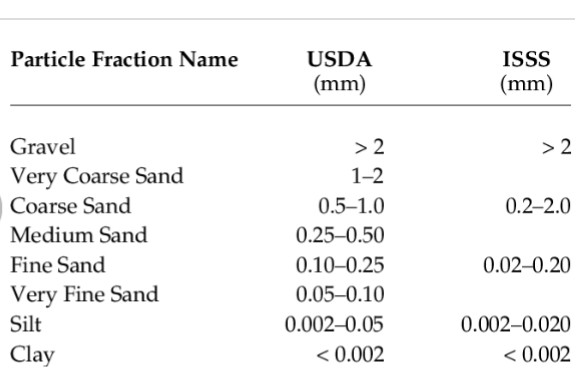
CLASSIFICATION OF SOIL
Soil textures are classified by the fractions of each soil separate (sand, silt, and clay) present in a soil. It focuses on the fine earth fractions that are particles less than two millimeters in diameter. The fine earth fraction includes all soil particles that are less than 2 mm. Soil particles within this fraction are further divided into the 3 separate size classes, that is, sand, silt, and clay. The size of sand particles range between 2.0 and 0.05 mm; silt, 0.05 mm and 0.002 mm; and clay, less than 0.002 mm. Clay particles are very smaller than sand particles because the size of soil formed is due to the type of parent material from which they are formed and the degree of weathering that takes place to form the soil. Sand particles which are primary minerals have not undergone much weathering. On the other hand, clay particles are secondary minerals produced as the products of weathering of primary minerals. As weathering continues, the soil particles break down and become smaller and smaller.
Classifications are typically named for the primary constituent particle size or a combination of the particles sizes. For example; “sandy clay” or “silty clay”. Loam soil is the type of soil that has equal proportion of sand, silt, and clay in a soil sample. It is also used to name and classify the soil. For example ; “clay loam” or “silt loam”.
In United States, the United States Department of Agriculture (USDA) defined soil texture into twelve major classes. The twelve classes are sand, loamy sand, sandy loam, loam, silt loam, silt, sandy clay loam, clay loam, silty clay loam, sandy clay, silty clay, and clay.
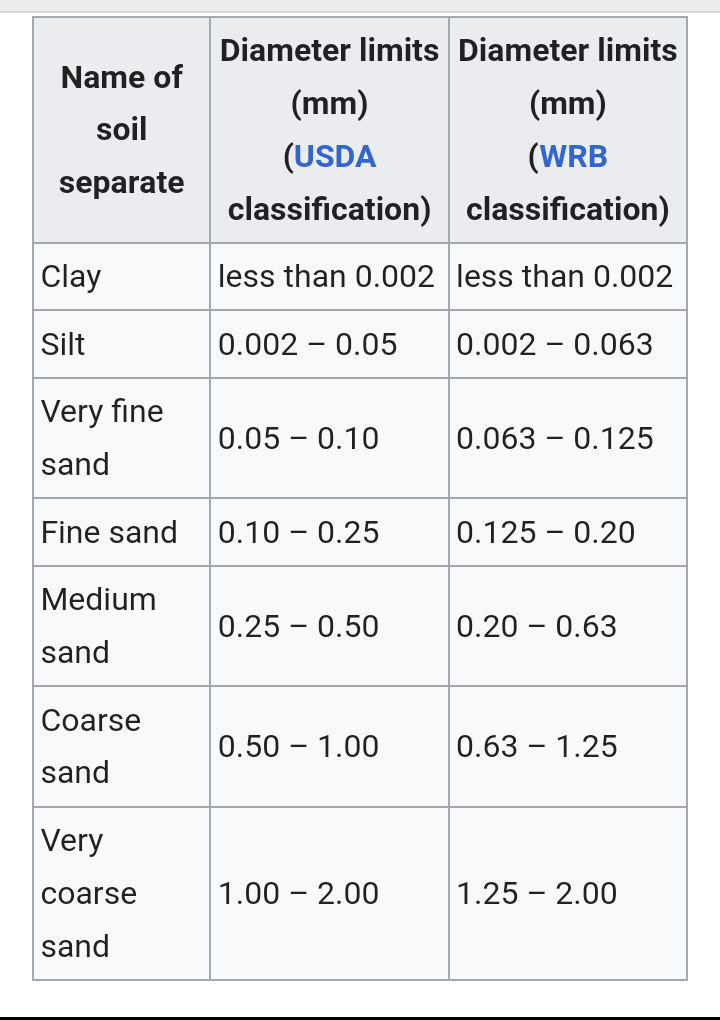
DETERMINATION OF SOIL TEXTURAL CLASSES
To determine soil textural class, a soil texture triangle is used. The soil texture is known by carrying out analysis of the soil particle size distribution in the laboratory using the Hydrometer method and then plot on the soil textural triangle. The soil triangle sides are represented by the percentage soil fraction.The three sides of the textural triangle represent increasing or decreasing percentages of sand, silt and clay particles. One side of the triangle represents percent sand, another side represents percent clay, and the third side represents percent silt. If the percentages of sand, clay, and silt in the soil sample are known from the analysis, then the triangle can be used to determine the soil textural class. For example, if a soil is 70 percent sand and 10 percent clay then the soil is classified as a sandy loam.
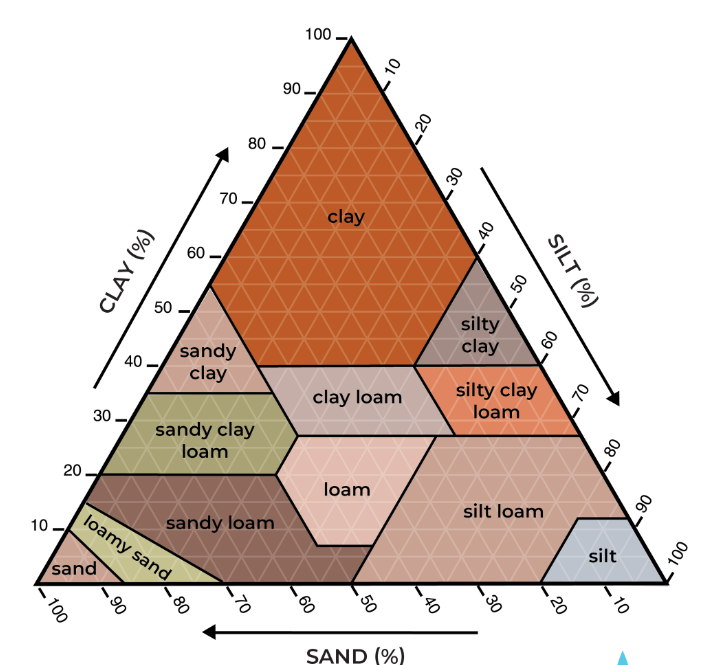
It is also possible to determine soil texture by hand texturing. This is possible by using samples of known texture, and it requires a lot of practice. This procedure requires working a moist soil in- between the thumb and fingers to form a ribbon. Sand and clay percentages are then estimated using the guide in the table below.
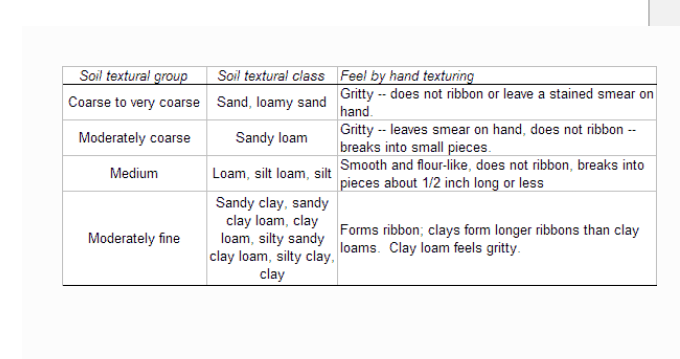
PROPERTIES OF THE TEXTURE CLASSES
1. SAND: Extremely gritty, not smooth, not sticky or plastic, non cohesive ball which collapses easily
2. LOAMY SAND: Extremely gritty, not smooth, not sticky or plastic, slightly cohesive ball which does not form thread
3. SANDY LOAM: Very gritty, not sticky or plastic, slightly cohesive ball and does not form thread
4. LOAMY: moderately gritty, slightly smooth, slightly sticky or plastic, moderately cohesive ball 5. SANDY CLAY LOAM: moderately gritty, not smooth, moderately sticky or plastic, moderately cohesive ball which forms long thread easily which can be bent to form ring.
6. SANDY CLAY: Moderately gritty, not smooth, very sticky or plastic, moderately cohesive ball which forms long thread easily and can be bent to form ring
7. CLAY LOAM: Slightly to moderately gritty, slightly smooth, moderately sticky or plastic, very cohesive ball and forms thread
8. SILT LOAM: Not gritty to slightly gritty, very smooth and silky, slightly sticky or plastic, moderately cohesive ball and forms thread.
9. SILT: Not gritty to slightly gritty, extremely smooth and silky, very slightly sticky or plastic, moderately cohesive ball, and forms thread
10. SILT CLAY LOAM: Not gritty to slightly gritty, moderately smooth and silky, moderately sticky or plastic, moderately cohesive ball, and forms thread which will not bend to form ring
11. SAND CLAY: Not gritty to slightly gritty, moderately smooth and silky, very sticky or plastic, very cohesive ball, and forms long thread which bends to form ring.
12. CLAY: Not gritty to slightly gritty, not smooth and silky, extremely sticky or plastic, extremely cohesive ball, and forms long thread which bends to form ring easily.
